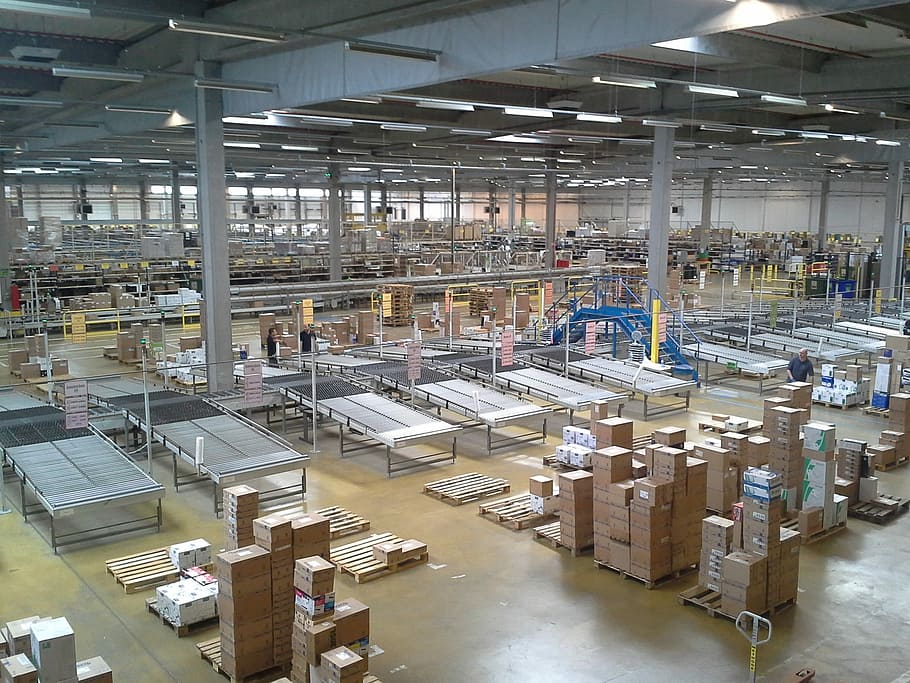Department stores, factories, or warehouses should be illuminated efficiently. In order to do that, they must be equipped with powerful lighting to illuminate the vast amount of space that has, horizontally and vertically. The ideal fixture to perform this task would be high bay lights. This is because the fixtures installed should be powerful enough to pull the job off and the light needs to spread quite a decent color rendering. And this has to be done because people should be able to properly see the products in the most natural lighting possible.
HIDs (high-pressure discharge) lamps and high-pressure sodium lights have been the go-to products for structures with high ceilings. Yes, they have their good points, but there are now improvements being made with regard to conventional illuminations. Issues that need to be addressed by department stores, factories, or warehouses with their lighting systems are the longevity of the lights and the reduction of overall energy consumption it consumes.
High Bay Lights: HID Light Variants
HIDs are usually considered for high-ceiling building complexes. This type of technology has a very low light output and color rendering index. Unfortunately, it’s quite an inefficient product when you’re looking at a long-term run. Also, whenever you’re going to turn on these types of lights, it takes a while (about 15 to 30 minutes give or take) for them to startup. You’ll also be seeing some flickering during start-up.
There’s also the build-up of heat with HID lights. Some of your lamps will also see a 70% drop in capacity after they hit the 10,000-hour mark of serviceable life. You’re looking at a very short lifespan for this type of light. Also, HIDs are ballast operated. So, if you have a damaged ballast, you’re looking at even more work. When you’re looking at maintenance costs, HIDs aren’t really the best option when you’re looking to cut down in that area. They are quite expensive to maintain and sustain. These lights also have the capability to block a production line and are not really eco-friendly.
HPS and Fluorescent Lights
High-pressure sodium (HPS) is another type of light that can be used in high bay lights. They have been typically used in factories or warehouses. It, unfortunately, gives off a low color rendering index and produces quite a bad color rendering. You’re also looking at a warm-up time for it to fully be able to work at its best capacity. Fluorescent lights are also another option for high-ceiling infrastructure. Usually, you’re looking at T12, T5, or T8 for this type of installation. The main problem you’ll meet with this type of fixture for high bay lights is the toxic components in the fixture. You’ll also notice that as fluorescent lamps age, their performance also degrades.
LED Lights
We’ve just enumerated a couple of lights which are usual choices when working with high bay lighting. These types are usually chosen because of the clients’ need for having the lights be operational for quite a period of time. As you can see, we’ve pointed out a few of their negatives when you choose to work with them. Now, when we’re looking at LEDs for high bay lights, there are a lot of benefits this technology can provide.
In contrast to HIDs, HPS, and fluorescent lights, LED lights do not require any type of warm-up time. They instantly light up. Your output light with LED lights is a lot more effective and you won’t lose a lot of energy as a result. Because of its effectiveness, you’re looking at a longer lifespan for this product. Basically, you’re looking at an average of 50,000 working hours for your LED light fixture. Because of the effectiveness of LEDs, you’re looking at about 60% in savings as well. You can also further increase your savings by having the option of dimming your lights through sensors. So, when you’re looking at more than 60% of savings through this light fixture, you can definitely expect a faster return on your investment for installing LED fixtures.
Conclusion
So, no matter how you look at it, you can clearly see that high bay lights are the best option for infrastructures with high ceilings. Couple them with LED lights and you’re definitely a winner at this point on. You’ll be seeing a decrease in maintenance cost, a better quality of light produced, and better energy consumption. Also, most importantly, you’ll be helping out in the environment because LEDs are eco-friendly. This will also mean that your employees are well cared for as well.
For More Updates, Follow Us on Facebook: https://www.facebook.com/TetrusOfficial

